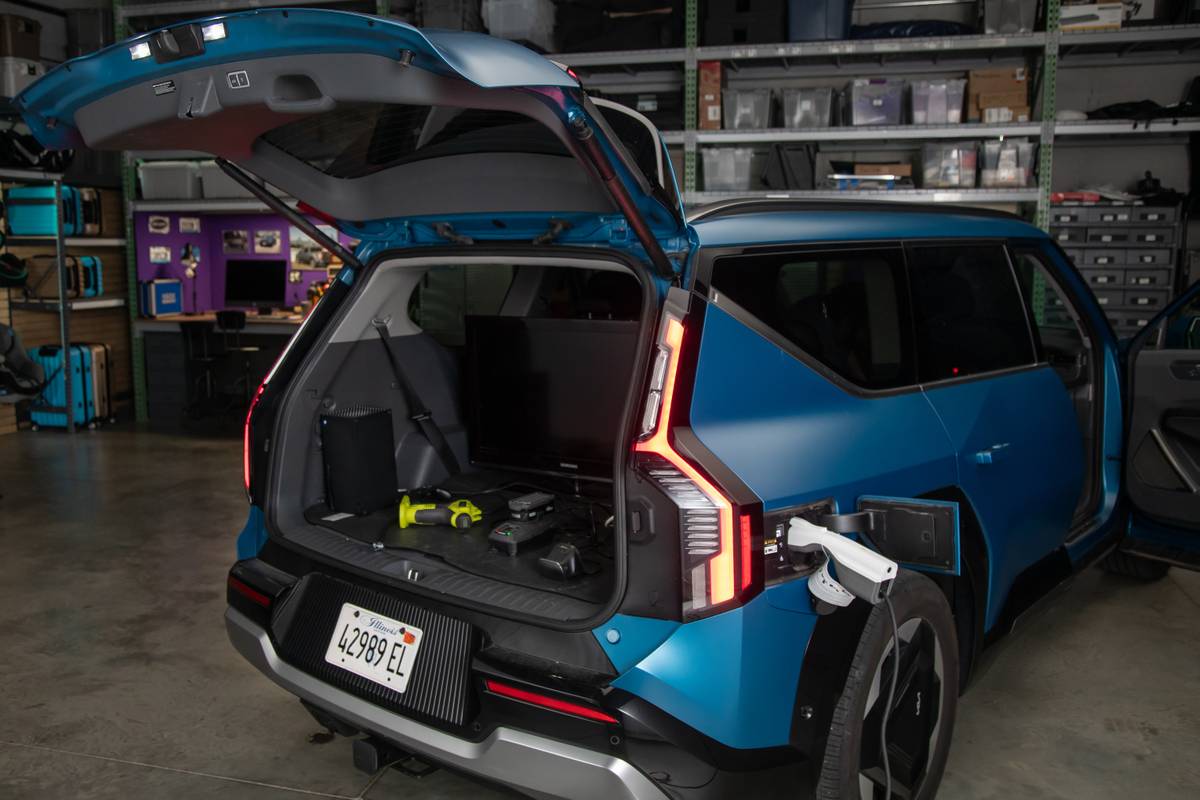IndyStar.com's view
The Dakotas — North and South — are known for their rugged terrain, rugged climate, and rugged citizenry.
It’s a potent triad that fits the product association that Dodge is using for its all-new 1997 Dakota compact pickup.
The ’97 Dakota, a member of Dodge’s Ram family of trucks, features the latest in technology and manufacturing for a broad-shouldered workhorse in compact form that’s equal to tasks performed by larger trucks. This is particularly true when the Dakota is equipped with what Dodge boasts as the only V-8 engine in the compact market.
The 5.2- liter (318-cubic-inch) V-8 caps an engine lineup that includes a 3.9-liter (239-cubic-inch) V-6 and a 2.5-liter (150-cubic-inch) four-cylinder.
The V-8 now produces 230-horsepower and 300 footpounds of torque, considerably more power than the 175-horsepower and 225 footpounds of torque for the V-6, or the 120-horsepower and 145 footpounds of torque for the inline four- cylinder.
The trucking business is a build-your-own affair where individual requirements dictate that your truck that conforms to your individual requirements. In this light, the Dakota is offered in standard and club cab form, two- and four-wheel drive, and box lengths of 6.5 feet and 8 feet.
The exterior of the new Dakota bears a resemblance to the Dodge Ram pickup, but still offers its own identity.
The grille resembles that of the Ram, but is smaller and nestles into a depression in the bumper face bar. A windsplit in the hood frames the recessed Dodge truck ram’s-head medallion.
The front fenders and box sides are wider than those of the 1996 Dakota to accommodate larger tires. The bulging wheelwells have been extended outward to accommodate huge, off-road tires utilized by four-wheel drive configurations
The body is 3.6 inches wider than its predecessor (72 inches) to provide more shoulder, hip and head room. The Club Cab can seat six passengers.
The Dakota’s seating actually ranges from two occupants to six. With a standard cab, you can get dual buckets or a three- across bench seat. The Club Cab, buckets and rear bench provides seating for five. With bench seats front and rear, the truck will handle up to six passengers.
The interior design is thoroughly integrated with other interior elements. The focus of the instrument panel is the one-piece cluster bezel that mimics the shape of the Dakota’s distinctive grille. The top panel cover is dark to minimize reflection in the windshield.
Much of the interior design flows from functional and ergonomic requirements, with controls, buttons, switches and handles all located for maximum accessibility.
The Dakota’s front seat specifications have been enlarged and seat track travel has been extended. To accommodate shorter riders, the travel has been extended forward 0.79 inch. On club cabs, it has been extended rearward 1.2 inches.
According to Dodge, Dakota Club Cabs have the only forward-facing rear seats in the compact market segment.
From a pul ling standpoint, a Dakota with a V-8 obviously is the strongest model. In two-wheel drive regular cab form, it has a trailer towing capacity of 6,800 pounds, quite a load for a compact pickup. The payload is rated at 2,600 pounds.
Like all pickups, the Dakota is a body-on-frme design, with the frame redesigned for 50 percent greater torsional rigidity and reduced body shake.
To improve ride and handling, engineering redesigned the front short/long suspension arms that interact with coil springs. Four-wheel drive models utilize a torsion bar system. In the back, the track has been widened 2 inches, with leaf-spring suspension.
A V-8-powered Dakota with two- wheel drive and 111.9 inches of wheelbase provides the best acceleration performance. It has a curb weight of 3,787 pounds and turns 0-60 miles per hour in 8 seconds.
Latest news



